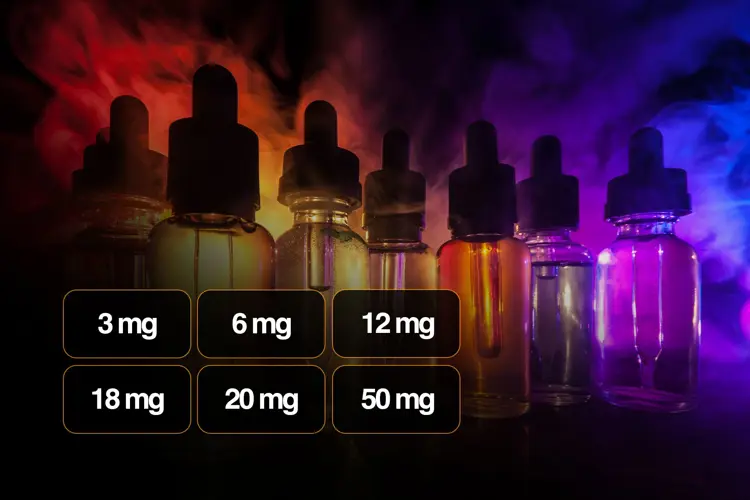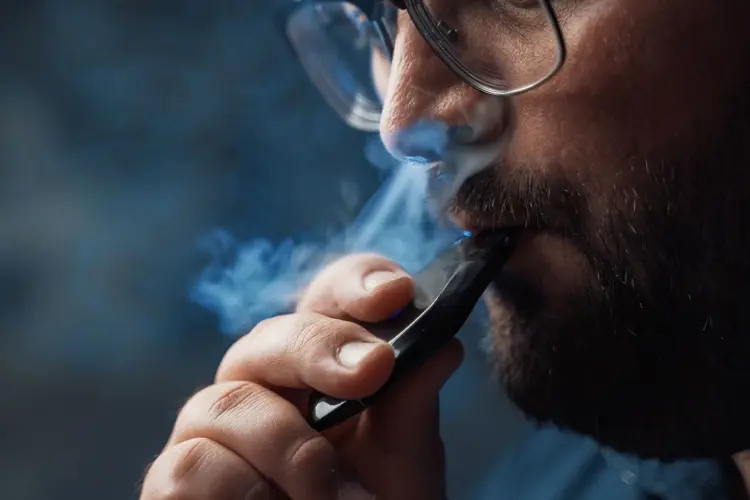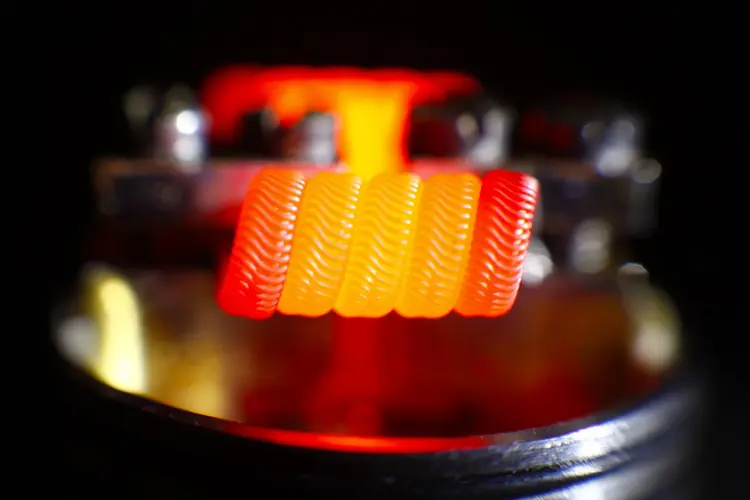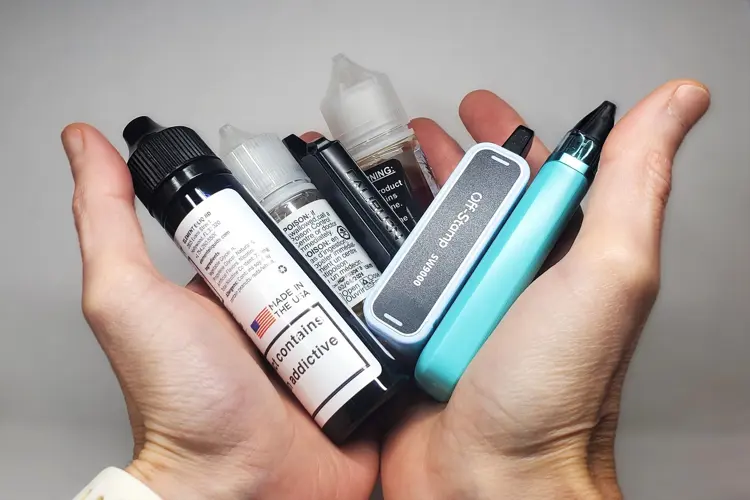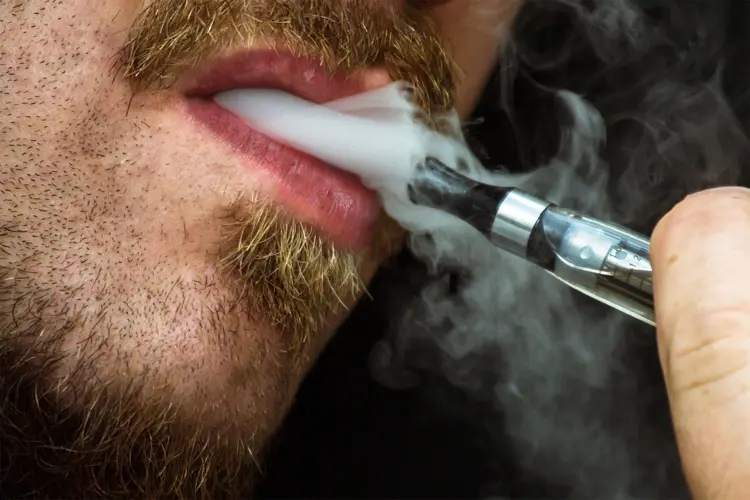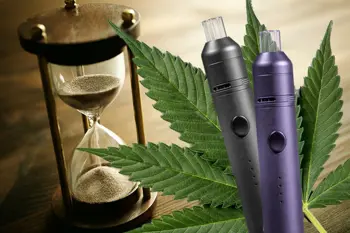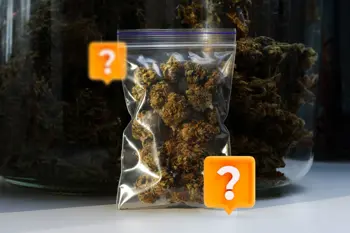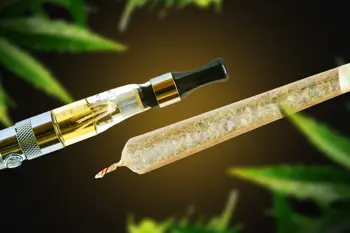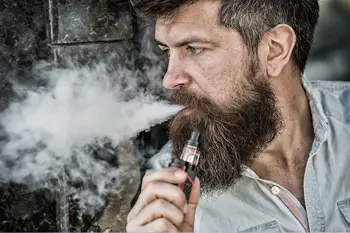If you’ve wondered why vaping makes you cough, you’re not alone. Vape cough is something almost every user has experienced to some degree. It comes with the territory, but it doesn’t have to be a daily struggle.
In this article, we’ll explore several reasons why vaping can irritate your throat. There are plenty of potential culprits, but the good news is most of them can be avoided or remedied. Keep reading and you’ll find helpful tips on how to vape without coughing.
Why do I cough when I vape?
Some of the reasons are biological, while others are related to vaping techniques, e-liquid choice, and hardware. Try to determine which ones might apply to you.
Inexperience
New vapers or transitioning smokers are far more likely to struggle with vape cough. Sometimes this is probably a result of biological responses, but it’s often just a lack of experience.
Most people cough the first time they smoke a cigarette. It’s a new experience—the body needs to adapt. Vaping is not smoking, but inhaling anything requires a learning curve.
This essentially prefaces many of the other topics in this article, which are intended to help make that adjustment period smoother.
Nicotine type
It’s important to note the distinct differences between freebase nicotine and nicotine salt. Using either one could explain why vaping makes you cough.
- Freebase nicotine is harsher on the throat, specifically in higher concentrations. For some users, this harshness might resemble the sensation (throat hit) of a cigarette. Generally speaking, e-liquids that use freebase nicotine come in lower strengths, ranging from 3 to 18 mg/mL. (Nicotine strength can be represented as mg/mL—which we’ll just shorten to mg—or as a percentage, like 0.3-1.8%.)
- Nicotine salt is especially common in disposables and pod vapes. The e-liquids in these low-powered devices usually contain higher nicotine levels than their freebase cousins. In nicotine salt, freebase nicotine is mixed with an acid (usually benzoic acid), which lowers the pH level. The result is less throat irritation. For example, 50 mg (or 5%) nic salt is a popular strength, but few people would dare vape 50 mg freebase nicotine. It would be too harsh.
What type of nicotine causes a vape cough? Both—or neither. It depends on the person. Some people experience more throat irritation from one type of nicotine than the other. What works for you might make someone else cough, and vice versa. There’s no way to predict how each person will react. Experimentation and patience are often required to find the best nicotine type for you.
Nicotine level
Higher nicotine strengths increase irritation in the throat and lungs. There’s a delicate balance. Too much nicotine might induce a vape cough; too little will be unsatisfying. Everyone is different. You’ll have to experiment to find the sweet spot for you.
PG, VG, and flavorings
E-liquids are comprised of four primary ingredients: nicotine, propylene glycol (PG), vegetable glycerin (VG), and flavorings. We’ve already discussed nicotine, so let’s explore the other three.
PG and VG are the base of every e-liquid. If you’ve heard of 50/50 vape juice, that’s referring to the ratio of these ingredients (50% VG and 50% PG). These ratios vary widely—some flavors might have a 30/70 blend, while others could be 90/10.
- PG is a thin liquid known for being an efficient flavor carrier. It also provides more throat hit (in tandem with nicotine), which could lead to a vape cough in high-PG e-liquids. Please note that some people are prone to PG sensitivities. Consult your doctor if you suspect this is an issue.
- VG is a thick, viscous solution, mostly associated with vapor production. It is also sweeter than PG and smoother on the throat.
Flavorings could also explain why vaping makes you cough. Certain flavorings are often described as “throaty,” but any flavoring might bother you. Menthol and cinnamon are commonly cited as throat irritants, and others may also cause a cough. Dessert and bakery flavor profiles are sometimes said to present less chance of irritation.
Inhalation technique
If you want to know how to hit a vape pen without coughing, the method of inhaling is crucial. There are two different ways to inhale a vape: mouth-to-lung (MTL) and direct lung (DL).
- MTL: Similar to inhaling from a cigarette. Lightly inhale, briefly park the vapor in the mouth, then take it into the lungs and exhale. Other characteristics of MTL vaping include tight airflow, low power, high nicotine (12+ mg), and lower vapor production.
- DL: Similar to inhaling from a bong. Inhale directly into the lungs and exhale. It is essentially just like taking a very deep breath, only with some restriction and the addition of vapor. In contrast with MTL, DL vaping requires open airflow, higher power levels, low nicotine (0-6 mg), and produces much more vapor.
Mixing up these two vaping styles can cause problems. Attempting to take an MTL draw on an airy, powerful DL device will almost certainly make you cough. The opposite is also true—taking a big direct lung hit from a device with restricted airflow and high nicotine could make even the most experienced vaper cough.
Device type
The type of vape device you are using is also important, as it will determine the most appropriate inhale technique. Smaller devices with low power outputs, like disposables and refillable pod vapes, are designed for mouth-to-lung vaping. More advanced setups pair an MTL tank with a small box mod.
Direct lung devices are larger and feature higher power output. Popular devices in this category include AIO kits and high-wattage box mods paired with sub-ohm tanks.
Some devices with replaceable coils or pods offer options for both MTL and DL vaping. This is often indicated on the coil or pod. Refer to the manual or manufacturer’s website if you’re unsure about their proper usage.
Power level
The power level is probably the most intuitive explanation of what causes vape cough. It’s like warming your hands over a fire—a little heat is good, but too much will be unpleasant. Adjust the power setting until you find your sweet spot. And start low.
Dehydration and vape cough
Staying hydrated is important for everyone, but even more so for vapers. Dry cough is a symptom of dehydration, which can be exacerbated by the ingredients in e-liquid. PG and VG are hygroscopic; they absorb moisture. Nicotine is linked to dehydration as well. It’s important to consume fluids while vaping.
Cilia restoration
The human lungs contain trillions of hair-like structures called cilia. These tiny organelles keep the lungs clear by sifting out mucus, dust particles, and other debris. According to the CDC, tobacco smoke paralyzes and destroys cilia.
The good news is that cilia damage is reversible if you quit smoking. However, you could experience irritation as the cilia regrow, potentially leading to a cough. Like other side effects of quitting smoking—like bleeding gums and headaches—a cough caused by healing lungs happens to people who quit smoking whether they vape or not.
Vape cough can be a major setback for new vapers, which is why this topic is so important. If the issue is not addressed and remedied, they may be tempted to return to cigarettes.
I’ve personally seen this happen with a few people. They tried one vape kit (and one e-liquid), and it made them cough, so they gave up on vaping and resumed their old smoking habit. While such examples are discouraging, I’ve also seen others successfully push through these growing pains. They looked for answers, experimented with settings, and sampled different e-liquids. After some trial and error, they learned how to vape without coughing. For some, acclimating to vaping is easy; for others, it requires some patience and experimentation.
The nicotine strength and type are also pivotal factors for new vapers. My brother, for example, was a 20-year smoker, and his first vape was a prefilled pod system with 50 mg/mL nicotine salt. He hated it because every puff induced a coughing fit. After hearing this, I gave him some 18 mg freebase e-liquid, and his entire experience changed.
Not only did he stop coughing, but he managed to quit smoking as well (and he’s still vaping that same e-liquid five years later!). It was a seemingly tiny change, but it made a massive difference. Granted, some people will have the opposite experience (freebase nicotine makes them cough), but this only highlights the importance of experimentation in the early stages of your vaping journey.
How to vape without coughing
We’ve addressed the potential causes, now let’s look at some solutions. Here are six tips for how to vape without coughing.
Overcome your vape cough with experience
As stated earlier, vaping requires a learning curve. Vape cough tends to be a temporary annoyance that fades with time and experience. When you experiment with different devices, settings, e-liquids, and vaping styles, you’ll find a combination that works for you.
Sample different nicotine types and strengths
Quite often, nicotine can cause a vape cough. If you find freebase or nic salt irritating, switch to the other and see if things improve.
Adjusting the nicotine strength may also help. If a 50 mg disposable is making you cough, try something with 20 mg or 30 mg.
Experiment with PG/VG ratios and flavors
Remember, PG can cause throat irritation (and even allergic reactions). If vaping makes you cough, try an e-liquid with a lower PG percentage, such as 70% VG and 30% PG. Just remember that VG is much thicker than PG, so high-VG e-liquids won’t be suitable for some devices.
Flavors also play a role in vape cough. Experiment with different flavors to see which ones work best for you.
Inhale appropriately
Be sure your inhalation style is appropriate for the type of device you are using. Smaller, low-powered devices with tight airflow require a mouth-to-lung draw. High-powered and airy devices are generally suited for direct lung.
Regardless of the style, play around with different airflow settings until you find one that is comfortable.
Drop the power level
The power setting will determine the amount of vapor and heat in every puff. If it’s more than you can tolerate without coughing, turn the wattage down.
Drink more water
Vaping makes you more prone to dehydration. If you’re trying to figure out how to get rid of a dry cough from vaping, start by drinking more water. Cough or no cough, vapers should always keep the H2O flowing!
How to vape without inhaling into the lungs
Learning how to vape without inhaling into the lungs at all could eliminate any possibility of a vape cough. This can be done with a standard cigar-style puff. Just draw the vapor into your mouth, let it sit for a few seconds, and exhale.
Most users don’t prefer this technique because it isn’t quite as flavorful or satisfying. It can be effective, though. When doing a cigar puff, nicotine in the vapor is absorbed through mucus membranes, similar to nicotine pouches. In fact, even if you do inhale, much of the freebase nicotine in MTL devices is still absorbed through the mouth, throat, and sinuses before entering the bloodstream.
How to get rid of mucus and phlegm from vaping
In most cases, mucus and phlegm are not caused by vaping. Rather, they are byproducts of cigarette smoke exposure. If you recently quit smoking, remember that your body is still healing. Your lungs and air passages need to recover. Even if you are not vaping, you’ll likely cough up some nasty stuff while cilia-mucus function is being restored. This is normal.
So, if you’re anxious to get rid of mucus or phlegm from smoking, just give it a little time! And be sure to stay hydrated to help loosen up any congestion.
